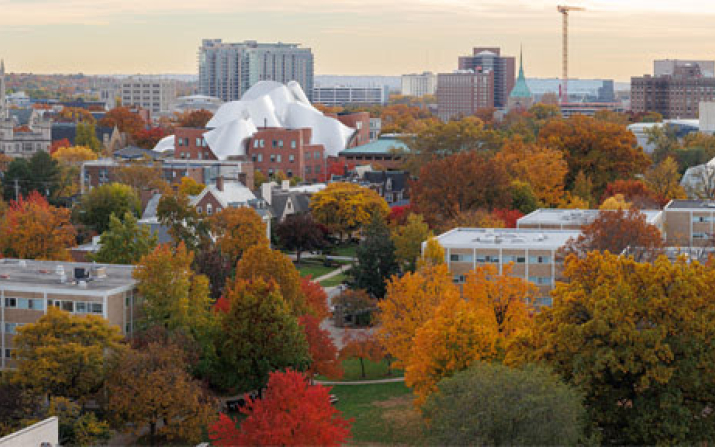Case Western Reserve wins $14.2 million federal grant to launch innovative materials data science Center of Excellence

University leads national team advancing data-based research, experiential education
Case Western Reserve University has received a $14.2 million grant from the U.S. Department of Energy’s National Nuclear Security Administration (NNSA) to launch a “Center of Excellence” focused on applying innovative approaches to enhancing manufacturing of materials with greater strength and longer lifecycles.
The center, which will include collaborators from national science laboratories and the University of Central Florida (UCF), will couple its research efforts with expansive education and mentoring programs for students at minority-serving institutions and high schools.
“Case Western Reserve is honored by this opportunity to help modernize materials’ development and production,” President Eric W. Kaler said. “We also look forward to preparing new generations of students to continue innovation in these fields.”
President Kaler also thanked Ohio Congresswoman Marcy Kaptur for her support of advanced materials research and education.
“The National Nuclear Security Administration’s award recognizes the critical role Case Western Reserve and Northeast Ohio are playing in the advancement of high science and technological innovation,” Kaptur said. “As Chair of the House Energy and Water Subcommittee, I will continue working to deliver the federal resources that help our academic institutions prepare the next generation of scientists and engineers.”
The five-year award supports creation of an NNSA Materials Data Science for Stockpile Stewardship (MDS3) Center of Excellence (COE).
French to lead new center
Roger French, the Kyocera Professor in the Department of Materials Science and Engineering will lead the center. Co-directors are Laura Bruckman, associate professor of materials science and engineering; and Yinghui Wu, the Theodore L. and Dana J. Schroeder Associate Professor of Computer and Data Sciences.
Collaborators include Lawrence Livermore National Laboratory, Sandia National Laboratories, Los Alamos National Laboratory and the Kansas City National Security Complex.
The full name of the center includes “stockpile stewardship,” the term for NNSA’s effort to advance its understanding of the fundamental mechanisms of degradation of materials and components in America’s nuclear stockpile.
The center will tackle the “fundamentally interdisciplinary and data-intensive challenge of preventing degradation of materials in the nation’s nuclear stockpile”, said French, who is also director of the SDLE Research Center at Case Western Reserve. That center also focuses on degradation science and designing better, longer-lasting materials and systems.
The new center’s staff includes: a managing director; diversity, equity and inclusion director; 11 faculty members; five postdoctoral scholars; 16 graduate students; and more than 20 undergraduate students at CWRU with an additional two graduate students at UCF.
Transforming data, training next generation
The new center will leverage CWRU’s expansive, multi-disciplinary expertise in high performance computing, data-knowledge modeling and materials aging and reliability to transform large volumes of data, Wu said.
“We will exploit advanced knowledge science, AI and machine-learning technologies to innovate on the conventional understanding and paradigms of how data resources can be harnessed to improve existing and future materials research,” Wu said.
The center will also engage students through community programming and partner with minority-serving institutions (MSIs) and high schools.
“The resources provided by this award allow us to create totally new research and programming opportunities for students who would otherwise not have access to this level of research,” Bruckman said, noting the university’s success supporting underserved high school students through a program with the American Chemical Society.
The students who will benefit from the center’s educational programs are from urban and rural neighborhoods that suffer environmental and economic inequalities, as well as veterans and other individuals facing barriers. Those barriers include lack of digital access or limited opportunities including access to jobs, housing and economic mobility.
Collaboration in ‘high science and technological innovation’
The new NNSA Center of Excellence at Case Western Reserve represents another significant step in the ongoing collaboration between the university and NNSA partners, including Lawrence Livermore National Laboratory (LLNL). Last month, President Kaler and Livermore Director Kim Budil aimed at increasing opportunities for research collaboration.
“This center represents a concerted effort on the part of our university and our research collaborators,” French said. “We are grateful to partners at the national labs and the University of Central Florida, as well as our proposal partner KB Science.” (A proposal partner is an organization that helps institutions secure grants, particularly for federal funding.)
For more information, contact Mike Scott at mike.scott@case.edu.
This article was originally published Sept. 26, 2022, in The Daily.
